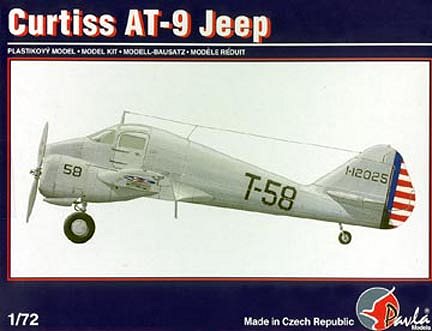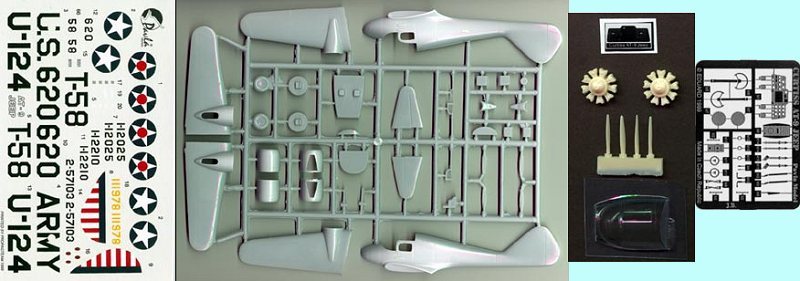
|
KIT: |
Pavla 1/72 AT-9 'Jeep' |
|
KIT # |
72013 |
|
PRICE: |
$18.95 |
|
DECALS: |
Two aircraft |
|
REVIEW BY: |
|
|
NOTES: |

|
HISTORY |
The AT-9 advanced trainer was used to bridge the gap between single-engine trainers and twin-engine combat aircraft. The prototype first flew in 1941, and the production version entered service in 1942. The prototype had a fabric-covered steel tube fuselage and fabric-covered wings, but production AT-9s were of stressed metal skin construction. The AT-9 was not easy to fly or land, which made it particularly suitable for teaching new pilots to cope with the demanding flight characteristics of a new generation of high-performance, multi-engine aircraft such as the Martin B-26 and Lockheed P-38. Although the AT-9 originally bore the nickname "Fledgling," it was more widely known as the "Jeep." Four hundred ninety-one AT-9's and 300 AT-9A's were built before production ended in February 1943.
Specifications
Span: 40 ft. 4 in. Length: 31 ft. 8 in.
Height: 9 ft. 10 in.
Weight: 6,062 lbs. loaded
Armament: None
Engines: Two Lycoming R-680-9s of
295 hp. each
Crew: Two
Cost: $34,900
Maximum Speed: 197 mph.
Cruising Speed: 173 mph.
Range: 750 miles
Service Ceiling: 19,000 ft.
|
THE KIT |

Think early Eduard here. The parts are molded on rather large sprue stubs and it is recommended that you use a razor saw or razor saw blade in an X-Acto knife to cut the parts from their sprue. The openings for the gear struts will have to be sawn and opened. The door window areas on each fuselage half will need to be cut away for the vacuform canopy. All parts require the sand and dry fit method before committing oneself to glue. PThe photoetched fret contains cockpit enhancements such as an instrument panel, two steering wheel controls, seat belts, overhead control console, center console highlights, controls, and trim wheels. External parts consist of the boarding steps, door handles, under fuselage navigation lights, aileron control rods, antenna, landing gear torsion links, and wheel centers. From Eduard, so you know the quality of these.
The decal sheet is printed by Propagtem, so I expect good opacity, I will probably replace the National Insignia with AeroMaster or SuperScale, as the kit's are almost black. There are decals for three AT-9's, two in natural metal finish and one in olive drab over neutral gray.
Look for a full review of this kit in a few weeks on my website and in Modeling Madness. I would like to thank Jerry Campbell and the folks at Squadron Mail Order for supplying the kit.
Caz Dalton, IPMS #34765